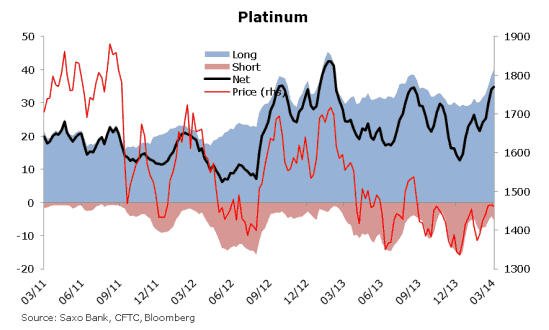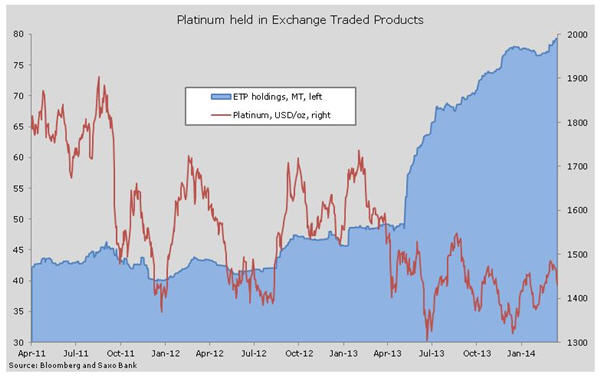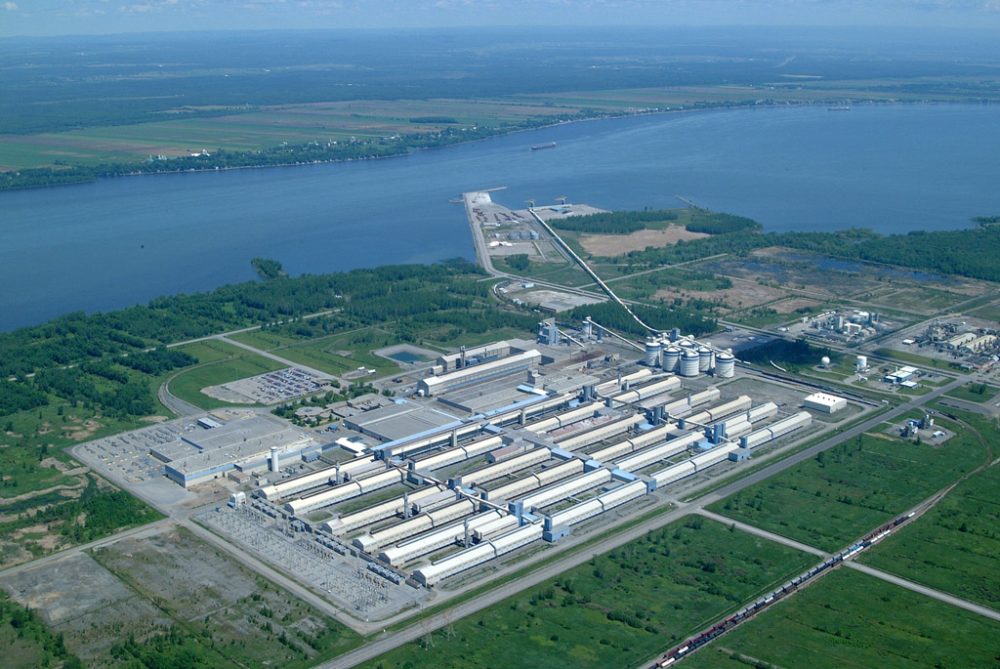Five reasons the platinum price should take off
 A combination of factors tells you platinum should trade much higher than it is today:
A combination of factors tells you platinum should trade much higher than it is today:
- A two-month-old strike at South Africa’s PGM mines that shows no signs of ending.
- A stand-off between the West and Russia, which together with South Africa control more than 70% of global platinum mining output.
- A surge in investor interest in physical platinum-backed exchange traded funds.
- Futures and options speculators in platinum build positions which are the most bullish in over a year.
- Number one platinum consumer, the European auto industry growing at least 5% this year, after falling for six straight years.
Platinum held in exchange product reached an all-time high in the week to 21 March of 79.3 tonnes, up more than 30 tonnes or 64% in a year.
At the same time large investors on the platinum derivative markets have increased their net long position to 1.75 million ounces, more than doubling the number of contracts since the start of the year.
That’s about half the combined annual output of strike-affected Anglo American Platinum (LON:AAL), Imapala Platinumm (OTCMKTS:IMPUY) and Lonmin (LON:LMI) which account for some 60% of the world’s production.
Yet the price remains soft; with spot declining again on Monday to a month low of $1,430.
The price of platinum has also declined since the start of the strike even though 10,000 ounces of production are lost each day it drags on.
Year to date platinum is up 4.2%, but still 165 below where it was this time last year.
Palladium is doing much better, but is not exactly shooting the lights out.
Palladium production of the metal – often used a platinum replacement in autocatalysts – is even more concentrated that platinum.
The metal gained on Monday touching the highest level since September 2011 and up 11% since the start of the year.
Graphs are from Saxo Bank’s Trading Floor. Worth a visit.
Image by Tom Holbrook
{{ commodity.name }}
{{ post.title }}
{{ post.date }}



Comments